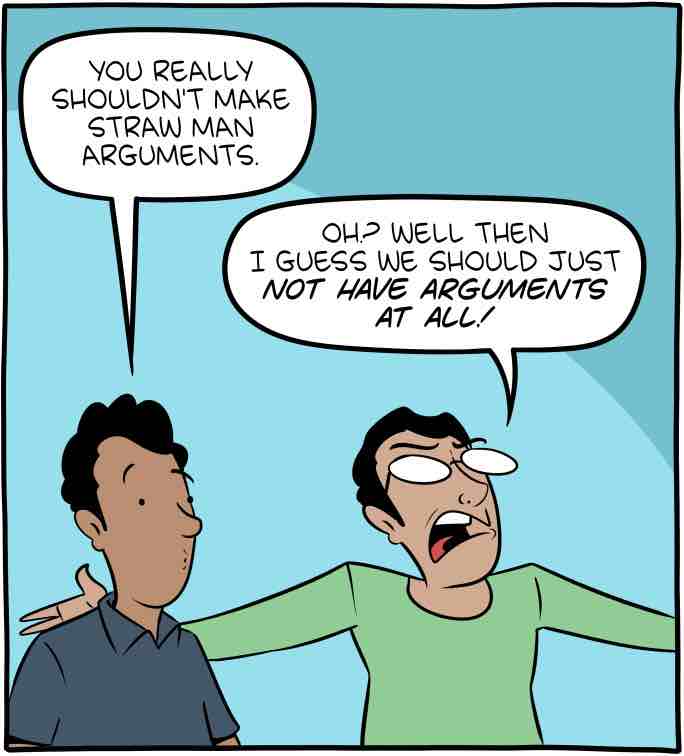4c. Body Paragraphs
Body paragraphs present the reasoning and evidence to demonstrate your thesis. In academic essays, body paragraphs are typically a bit more substantial than in news reporting so a writer can share their own ideas, develop their reasoning, cite evidence, and engage in conversation with other writers and scholars. A typical body paragraph in a college essay contains the following elements, which can be remembered through the useful acronym TREAT.
The TREAT Method
- Topic Sentence – an assertion that supports the thesis and presents the main idea of the paragraph
- Reasoning – critical thinking and rhetorical appeals: ethos, logos, and pathos
- Evidence – facts, examples, and other evidence integrated into the paragraph using summaries, paraphrases, and quotations
- Analysis – examination and contextualization of the evidence and reasoning
- Transition – the flow of ideas from one paragraph to the next
Effective body paragraphs are:
- Specific and narrow. Topic sentences provide your audience a point of transition and flow from paragraph to paragraph. Topic sentences help you expand and develop your thesis and set up the organization of each paragraph. Developing specific reasoning and specific, concrete examples and evidence in each paragraph will build your credibility with readers. If used properly, well-developed reasoning and evidence are more compelling than general facts and observations.
- Relevant to the thesis. Primary support is considered strong when it relates directly to the thesis. Body paragraphs should show, explain, and prove your thesis without delving into irrelevant details. With practice and the understanding that there is always another essay, effective writers resist the temptation to lose focus. Keeping your audience and purpose in mind when choosing examples will help you make sure to stay focused on your thesis.
- Detailed. Academic paragraphs are typically longer than newspaper and magazine paragraphs because scholars need space to develop their reasoning and provide sufficiently detailed evidence to support their claims. Using multiple examples and precise details shows readers that you have considered the facts carefully and enhances the impact of your ideas.
- Organized. If your paragraph starts to include information or ideas that stray from your topic sentence, either the paragraph or the topic sentence might need to change.
Reasoning and Evidence
In written and oral communication, we demonstrate our critical thinking skills through the various types of rhetorical appeals we make to our audience. The purpose and audience for a writing task shape the way writers develop reasoning and select evidence to support their ideas. Writers develop reasoning in body paragraphs through three primary methods: ethos, logos, and pathos. Writers can deploy many forms of evidence to support their reasoning, including: facts, examples, judgments, testimony, and personal experience.
Reasoning
The ancient Greek philosopher Aristotle developed a simple method for categorizing forms of reasoning by identifying three primary modes of argumentative reasoning: ethos, logos, and pathos.
- Ethos is reasoning that establishes a writer’s credibility. By showing yourself to be a critical and sympathetic reader, who considers multiple perspectives and demonstrates ethical thinking, you can establish ethos in your body paragraphs.
- Logos is reasoning that develops logical arguments and demonstrates a writer’s command of the facts. Demonstrating your knowledge of the facts and showing that you can distinguish between competing claims at truth will ground your writing in common sense and objectivity.
- Pathos is reasoning that appeals to human emotions and psychological motivations. Humans are subjective animals, and our ability to develop an emotional connection with an audience can have a powerful or subtle impact on whether they will agree with a writer’s reasoning.
A fourth form of reasoning, kairos, can occasionally be used to make an appeal to an audience that the perfect moment or right opportunity has arisen for action. Arguments for changing policies, ending wars, starting revolutions, or engaging in radical social change typically deploy kairos in addition to ethos, logos, and pathos in order to motivate people to take action a critical times in history.
Evidence
Evidence includes anything that can help you support your reasoning and develop your thesis. As you develop body paragraphs, you reveal evidence to your readers and then provide analysis to help the reader understand how the evidence supports the reasoning and assertions you are making in each body paragraph. Be sure to check with each instructor to confirm what types of evidence are appropriate for each writing task you are assigned. The following kinds of evidence are commonly used in academic essays:
- Facts. Facts are the best kind of evidence to use for academic essays because they often cannot be disputed or distorted. Facts can support your stance by providing background information or a solid evidence-based foundation for your point of view. Remember that facts need explanations. Be sure to use signal phrases like “according to” and “as demonstrated by” to introduce facts and use analysis to explain the relevance of facts to your readers.
- Examples show readers that your ideas are grounded in real situations and contexts. Examples help you highlight general trends and ground your facts in the real world. Be careful not to take examples out of context or overgeneralize based on individual cases.
- Judgments. Judgments are the conclusions of experts drawn from a set of examples or evidence. Judgments are more credible than opinions because they are founded upon careful reasoning and a thorough examination of a topic. Citing a credible expert to support your opinion can be a powerful way to build ethos in your writing.
- Testimony. Testimony consists of direct quotations from eyewitnesses or expert witnesses. An eyewitness is someone who has direct experience with a subject; they add authenticity and credibility to an argument or perspective based on facts. An expert witness is a person who has extensive expertise or experience with a topic. This person provides commentary based on their interpretation of the facts or extensive knowledge on a topic or event.
- Personal Experience. Personal observation is similar to eyewitness or expert testimony but consists of your own experiences and/or expertise. Personal experience can be effective in academic essays if directly relevant to the topic and suited to the purpose of a writing task.
Key Takeaways
- Always be aware of your purpose for writing and the needs of your audience. Cater to those needs in every sensible way.
- Write paragraphs of an appropriate length for your writing assignment. Paragraphs in college-level writing can be up to a page long, as long as they cover the main topics in your outline.
- Use your prewriting and outline to guide the development of your paragraphs and the elaboration of your ideas.
Addressing Counterarguments and Different Perspectives
“Few things are more difficult than to see outside the bounds of your own perspective—to be able to identify assumptions that you take as universal truths but which, instead, have been crafted by your own unique identity and experiences in the world.”
~David Takacs
Why acknowledge and respond to other points of view?
- Address potential weaknesses in your argument before others can point them out to you.
- Acknowledge the complexity of an issue by considering different perspectives and aspects of an issue. No issue has a simple solution or is just Side A versus Side B.
- Establish your writing ethos (can your reader trust you?): your reader is more likely to trust you if you thoughtfully analyze an issue from multiple angles.
- Add to your essay’s word count!
Four steps to acknowledging and responding to other points of view
Step One: Know your standpoint
What is my standpoint and why should I know it?
- Standpoint is the unique perspective from which you view the world. It includes: your background and experiences, your political and religious beliefs, your identity (gender, ethnicity, class, sexuality, and ability), your relationship to others, and your social privilege. These are things that will affect how you view and understand an issue.
- It’s important to acknowledge your standpoint because it affects what and how you argue.
Good writers are good readers! And good readers. . .

- Who are you?
- Make a list of what you’ll bring to a conversation about the issue on which you’re writing. What are your assumptions, your background and experience, your knowledge and expertise? Be honest!
Consider writing your standpoint into your essay
- Writing your standpoint into your essay builds trust with your readers. Even if they have a different standpoint, they will respect your honesty and hopefully listen respectfully to what you have to say.
- Writing from your standpoint can make your writing feel more authentic, to you and your reader. “This is me!”
Even if you don’t explicitly reveal your standpoint to your reader, you’ll want to know your standpoint so that you are aware of your own implicit bias as you write.
How do I write in my standpoint? Can I use “I”?
Try one of these templates:
-
- “What concerns me as a business major. . .”
- “I write this essay during a time when. . .”
- “I am concerned about. . .”
See how other writers we’ve read have done it:
-
- “Now, as a professor at the Harvard Graduate School of Education, I. . .” [From Anthony Abraham Jack, “I Was a Low-Income College Student. Classes Weren’t the Hard Part.” The New York Times Magazine]
- “From my first day as a sociology professor at a university with a Division I football and men’s basketball team, education and athletics struck me as being inherently at odds. . .” [From Jasmine Harris, “It’s Naive to Think College Athletes Have Time for School,” The Conversation]
- “In this society, that norm is usually defined as white, thin, male, young, heterosexual, Christian, and financially secure. It is within this mythical norm that the trappings of power reside. Those of us who stand outside that power, for any reason, often identify one way in which we are different, and we assume that quality to be the primary reason for all oppression. . .” [From Audre Lorde, “The Transformation of Silence into Language and Action”]
- “I might not carry with me the feeling of my audience in stating my own belief. . .” [From Ralph Waldo Emerson, “The American Scholar”]
Step Two: Consider potential weaknesses in your argument and different points of view on the issue
What potential weaknesses in your argument might you address?
- Logic: would a reader question any of your assumptions?
-
- between your reasoning and your claim: your main unstated assumption
- or between your evidence and your reasoning: is there evidence or types of evidence a reader might be skeptical of?
- Does the reader hold false assumptions about the issue?
- Could a reader give a different explanation of the issue?
- Could a reader draw a different conclusion from the evidence?
- Is there a specific reader who would disagree?
What alternative points of view on the issue might you consider?
- How might someone think differently about the issue?
- How might someone approach the issue from a different standpoint?
- What might keep someone from trusting or believing a claim or point you make?
- What might make someone tentative about taking action?
- What might keep a person from having an open mind?
Which one should I choose to address?
It depends on the essay’s length. You might consider 1-2 counterarguments that are most important for you to address in a paper (depending on the length).
- this could be a view your audience/community is likely to hold themselves
- or a common-knowledge one you think everyone will think of while reading
- and of course the one that is most specific to your argument
- if you can get one that fits more than one of these criteria, that’s even better!
What NOT to do when considering a counterargument

Build a straw man counterargument
- A straw man argument is a logical fallacy where the writer misrepresents or oversimplifies someone else’s argument in order to make it easier to refute.
- Writers also create straw man arguments when they make up a potential counterargument that is easy to refute, but isn’t something most people would reasonably believe.
Step Three: It’s time to write your counterargument into your essay
An exemplary counterargument:
- exists as its own paragraph
- you fully acknowledge and respond to it
-
- Note: You don’t have to refute a counterargument for your argument to work. Our world is big enough to hold multiple points of view. The paragraph should ultimately support your thesis, but you may amend, qualify, complicate, or open up your claim, which is often why, organizationally, discussion of counterarguments or different points of view work best in the introduction of your essay to set up your claim or as the last body paragraph to lead into your conclusion.
- relates to your audience/community’s likely concerns and interests
- seems like a realistic thing someone might think (is not a straw man or caricature)
- ideally, is specific to your argument, not your topic in general
- considers both sides respectfully
- may be more than one counterargument or different perspective, but you’d need a separate paragraph for each in order to give them full consideration
Addressing a counterargument versus a different perspective
A true counterargument is the opposing claim on an issue:
-
-
- Claim: Academic probation does not help students progress.
- Counterargument: Academic probation does help students progress.
-
Different perspectives might offer different reasoning, consider different factors or conditions, or ask about different groups of people or situations.
A counterargument needs to be rebutted. Different perspectives can help you amend, qualify, complicate, or open up your claim.
You might use a counterargument to qualify your thesis
An example:
Reasoned thesis: Hook-up culture is now at the center of the institution of higher education because it is thick, palpable, the air students breathe, and we find it on almost every residential campus in America. [From Lisa Wade, “Sociology and the New Culture of Hooking Up on College Campuses“]
A counterargument: Research findings suggest that the sexual practices of college students haven’t changed much since the 1980s. [From David Ludden, “Is Hook-Up Culture Dominating College Campuses?”]
Qualified claim: Although sexual practices of college students haven’t changed much in the last few decades, hook-up culture is now at the center of the institution of higher education because it is thick, palpable. . .
Counterargument paragraph: “The topic of my book, then, isn’t just hooking up; it’s hook-up culture. . .” (Wade).
A template for a counterargument paragraph
I recognize that others may have a different perspective than [state your claim*]. They might believe that [state their claim]. They believe this because [provide several sentences of support]. However, [restate your claim and explain in several sentences why you believe the way you do].
*You can also consider counterpoints to your reasoning, evidence, or standpoint.
Step Four: Decide where to organize your counterargument paragraph
|
Counterargument |
Examples |
|---|---|
|
An effective counterargument does not just say “someone might disagree,” but attempts to be specific: who (ideally someone like your reader) might disagree and why? What can you say that acknowledges their concerns but shows that your idea is still convincing? Some essays naturally acknowledge the counterargument all the way through because they’re proposing a change, which means the current situation is already a counterargument. In this case, it makes sense to address the counterargument early on: Why are things this way now? What’s wrong with it? Then consider if someone might agree that things should change but disagree about your course of action. |
Example 1: The current method of ranking college basketball teams came into existence because. . . (This paragraph would likely be in the beginning.) Example 2: Some college basketball fans might think that while the rankings aren’t completely correct in predicting winnings, they’re more complicated than I’m allowing for in this discussion; this idea merits consideration but does not ultimately derail my argument. (This counterargument might come near the beginning, too, because it discusses a potential flaw in the basic idea: someone might disagree that the problem is as bad as I’m saying. In this case, it’s likely good to talk about that early on, because if a reader thinks this they will probably not read all the way to page four to see you address their concern. Also note how this topic sentence ends by saying how the paragraph will end: with my idea still being better.) |
|
If my counterargument is X, |
then where in the essay should it go? |
|---|---|
|
If your topic doesn’t seem very controversial on its face. . . |
consider putting the counterargument in the beginning, to establish the controversy. |
|
If your counterargument is similar to one of your best points in the body of the essay. . . |
maybe put the counterargument paragraph before that body paragraph so your response logically leads into the next paragraph about a similar point. |
|
If you have several counterarguments paragraphs you want to include. . . |
you could put them throughout the body. |
|
If you have one solid counterargument paragraph but a couple of other opposed points you want to mention. . . |
you can address those points in other paragraphs where they fit most closely, including in a context paragraph and the regular evidentiary body paragraphs. |
|
If none of those seems true—it’s just another paragraph that could come anywhere—. . . |
reconsider your overall structure and find the place where this information needs to come. What do readers need to know first? Why? What needs to come later? |
Being aware of different perspectives can also help you develop your conclusion paragraph. In your conclusion, you can reaffirm your claim and then:
- amend part of your claim
- qualify your claim
- complicate your claim
- open up your claim
Writing as collaboration
Think of adding in counterarguments or different perspectives as collaborating with others on addressing an issue. . .



Brazuca illustrations by Cezar Berje, CC0
Opening up our minds and our hearts to different perspectives makes us stronger.

